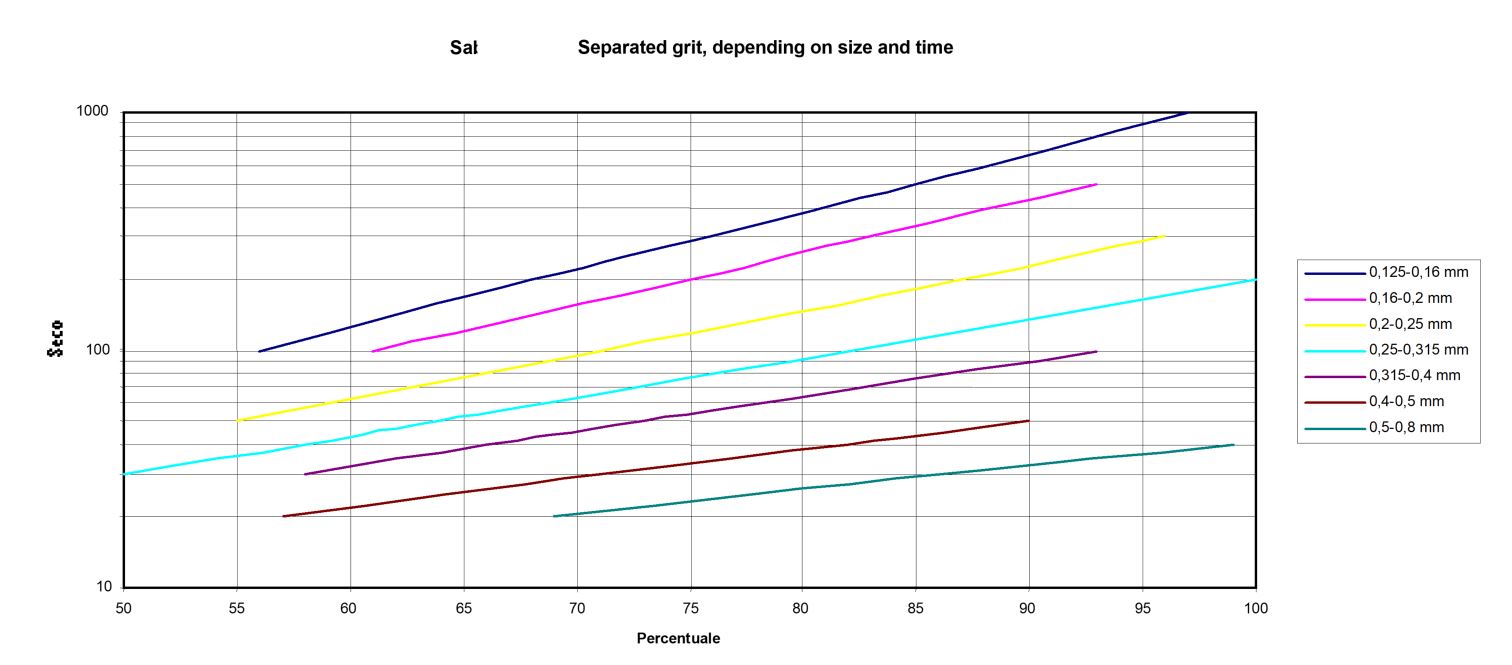OUTLINES OF THE GRIT REMOVAL PROCESS
The waste water often contains a large quantity of inert materials, mainly inorganic, which are generally defined as grit, even if actually the quantity of sand/grit is only a part of this type of materials. In fact, in the waste water treatment field, the words “grit” or “sand” do not refer only to the siliceous sands, of various sizes, but they are more commonly intended as the group of heavy inert materials which can be found in the waste water. The greatest quantity of grit reaches the waste water treatment plant during rainy periods, also because the cities sewer systems usually have a slight slope, and then a slow speed, and the sediments are dragged when the flow rate is rising.
A good grit removal system should sediment all and only the grits, of any size. The sedimentation of the organic materials should be avoided because the presence of putriscible materials in the removed grit would make them unusable or would not allow a direct elimination because it should be thouroughly washed.
Anyway in the grit removal systems, even if well sized and designed, there is always a small quantity of organic material.
To achieve a good grit separation there must be some specific physical conditions which allow to exploit the phenomenon of the difference of sedimentation speed between the particles of inert material, which sediment more quickly, and the particles of organic material.
There are a few types of Grit Removal Systems:
gravity grit removal systems
where the grit separation is achieved only by gravity (channel type systems)
mechanized grit removal systems
where the grit separation is helped by the rotation of a turbine (VORTEX type systems)
aerated grit removal systems
where the grit separation is helped by the air blown from the bottom
In the aerated grit removal systems the turbulence due to the air helps the grit separation and the suspension of the organic material.
The addition of a vertical baffle in the aerated grit removal systems makes the oils separation easier. They are collected in a calm zone, after the baffle.
The following table shows the percentage of the grit separation, depending on the granules size and the time of permanence in the tank.
